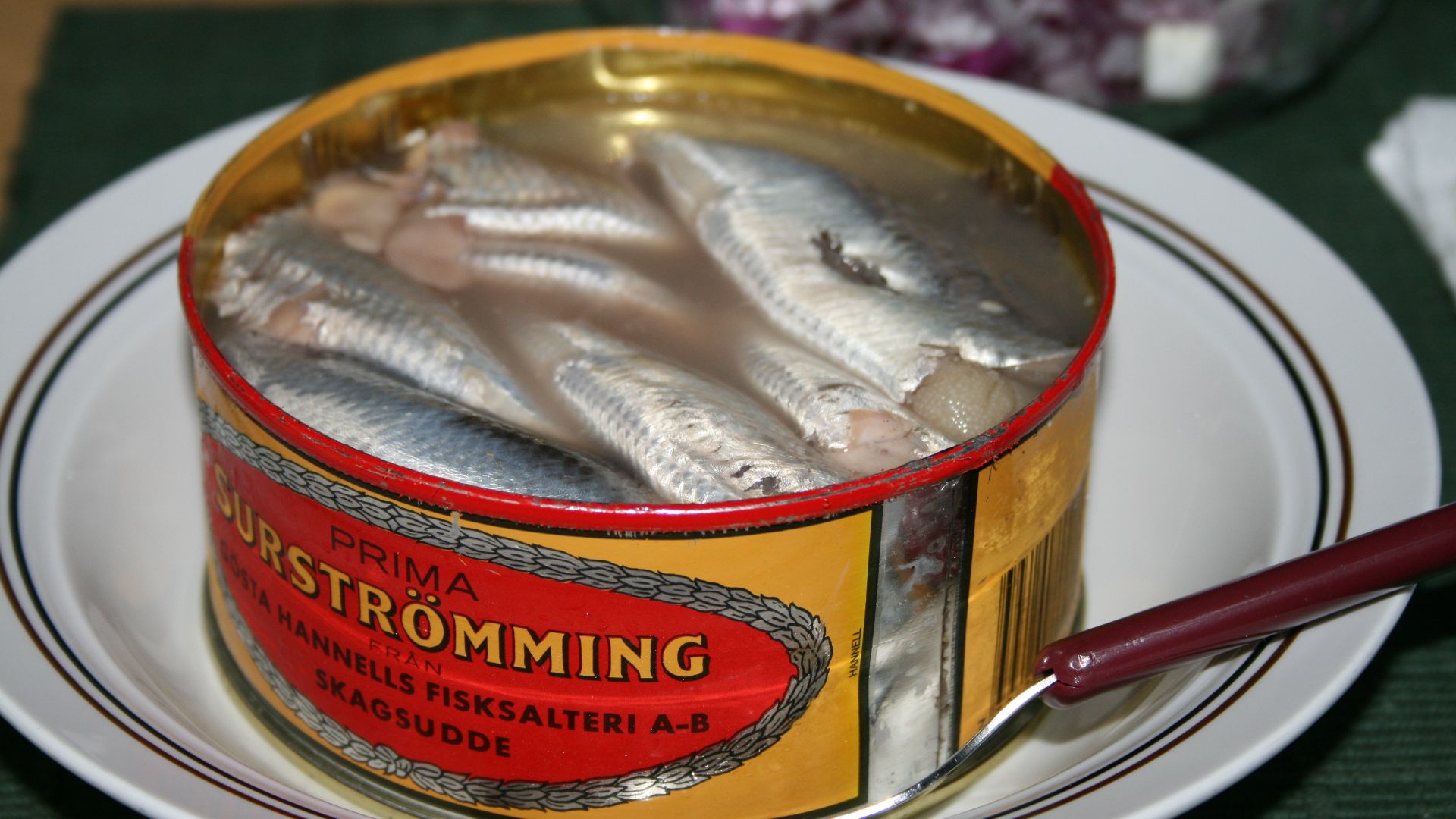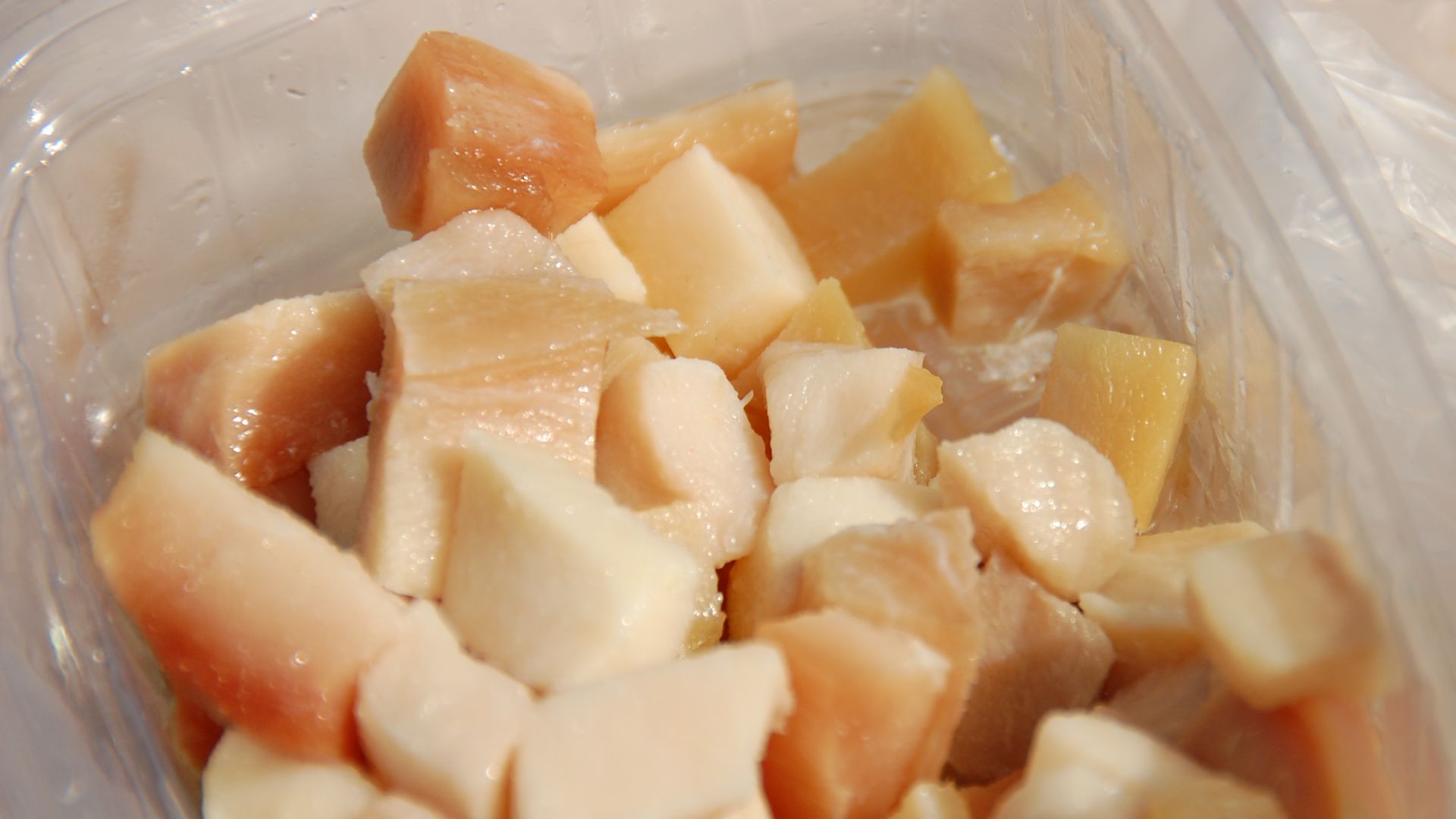Fried Spiders And Raw Pork? Here Are Some Of The Craziest Delicacies You Can't Handle
Sink Your Teeth Into This
We’re used to common food controversies like pineapple on pizza, but in the grand scheme of things, sweet and savory combos are the least of your worries. The world is a big place, and it's just waiting to introduce you to some local delicacies—none of which your Western palate is ready for. We hope you aren't hungry 'cause only the strongest stomachs can handle what's for dinner.
 Mat Connolley (Matnkat) on Wikimedia
Mat Connolley (Matnkat) on Wikimedia
Jellied Moose Nose (Canada)
We always knew moose wandered through Canada, but we never knew their poor noses were up for grabs. While you likely won’t see jellied moose nose on everyday dinner tables, some Indigenous cultures in northern Canada still indulge in the treat, which consists of white and dark meat mixed with spices before it’s refrigerated.
Casu Martzu (France)
You’ve heard of blue cheese, maybe even Roquefort—but now it's time to feast your eyes on cheese literally crawling with maggots. In an advanced fermentation process, cheese flies are brought in to break down the pecorino fats and make it soft. The EU had the good sense to ban this, but it’s still available in parts of France.
Ant Eggs (Thailand)
Who needs lemon juice when you have acidic ant eggs? That seems to be the common sentiment across Southeast Asia, though they’re particularly popular in Thailand! They’re also well-known sources of protein and are often tossed in dishes like salads or soup.
Fried Spider (Cambodia)
This dish brings a whole new meaning to “conquer your fears.” Fried tarantulas are most popular in Skuon, a market town filled with platters of creepy crawlies all for a modest price. Though, we’re not sure any amount can convince us to chow down on crispy spider legs.
Surströmming (Sweden)
Sweden sees your grocery store fish counter and they raise you surströmming, fermented herring—and one of the worst smells in the world. It’s hard to expect anything less from this canned fish, especially since it’s fermented for at least six months before gagging consumers everywhere.
Mett (Germany)
What’s a bread roll without raw minced pork? Believe it or not, it’s a common sandwich in Germany and the meat is usually seasoned with salt, pepper, and raw onion. Don’t worry, at least the bread is properly baked.
Century Egg (China)
As if regular eggs didn’t smell bad enough, China’s blackened century eggs bring entirely new aromas to the table. Modern recipes thankfully strayed away from traditional processing methods, which included curing eggs in clay, salt, ash, and quicklime for weeks or even months at a time. That said, ones today still have their signature bruised look and pungent stench.
Hormiga Culona (Colombia)
These ants carry a lot of junk in the trunk, something their dish’s name alludes to. Luckily, that also means you get plenty of bang for your buck with this roasted delicacy—it’s a shame the poor queens are the only ones ever harvested.
Balut (Philippines)
No, we’re still not past all the nauseating egg dishes. This little number comes from the Philippines and it’s a fertilized duck embryo eaten out of the shell. In case you were wondering, yes, you can very much tell that it’s an embryo.
Hákarl (Iceland)
This famous Icelandic dish isn’t for the faint of heart. On the surface, “fermented shark” might not seem so bad…until you find out it’s been fermented for at least four months. What you’re left with is a taste so foul not even Gordon Ramsay or the late Anthony Bourdain could handle it.
KEEP ON READING

20 Foods With Shocking Origins You'd Never Believe

No Oven No Problem: 20 Impressive No-Bake Desserts







